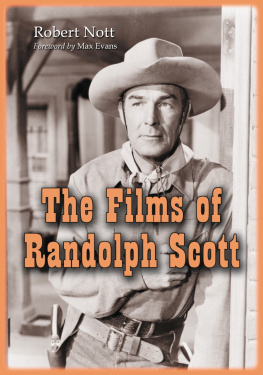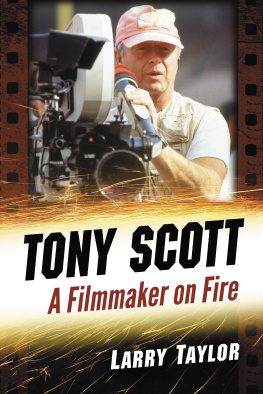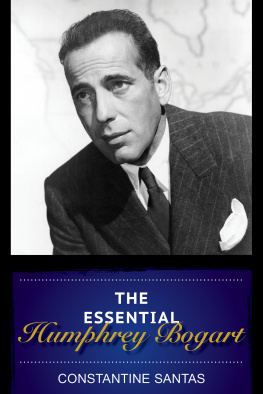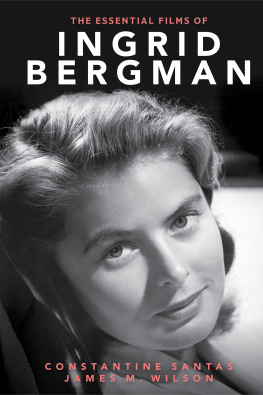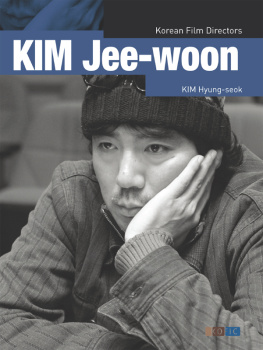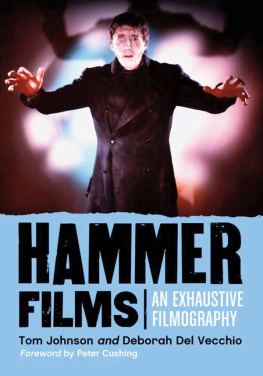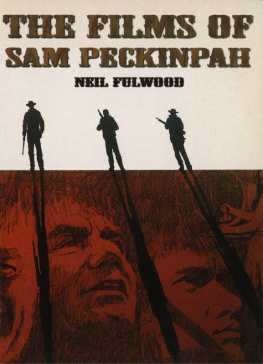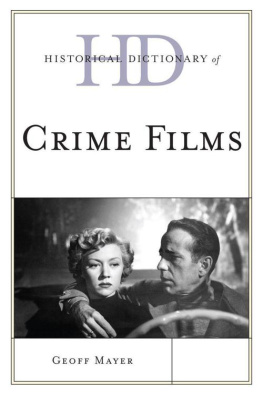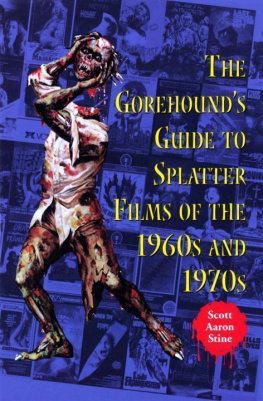
The Films of Randolph Scott
ROBERT NOTT
foreword by Max Evans

McFarland & Company, Inc., Publishers
Jefferson, North Carolina
LIBRARY OF CONGRESS CATALOGUING DATA ARE AVAILABLE
BRITISH LIBRARY CATALOGUING DATA ARE AVAILABLE
e-ISBN: 978-1-4766-1006-1
2004 Robert Nott. All rights reserved
No part of this book may be reproduced or transmitted in any form or by any means, electronic or mechanical, including photocopying or recording, or by any information storage and retrieval system, without permission in writing from the publisher.
On the cover: Randolph Scott in Colt .45 (1950)
McFarland & Company, Inc., Publishers
Box 611, Jefferson, North Carolina 28640
www.mcfarlandpub.com
For Randy, Burt, Budd, and Harry Joe
Acknowledgments
As usual, when it comes to a book like this a lot of people end up helping an author, often with the understanding that if theyre lucky the most theyll get out of it is a free book and a cold beerpreferably Randolphs Ride Red Ale. So here we go:
Thanks to John Cocchi, who provided me with photos, publicity materials and historical information on Scotts films. He even offered to screen Sky Bride for me.
Boyd Magers should be called upon to help anyone who is contemplating writing about Western films. His Western Clippings newsletter is probably the best contemporary source for information on the genre. I hope he compiles them all into one book someday. Boyd also put me in touch with a few interview subjects and gave me access to the Albuquerque chapter of Thelma Kings unpublished book on William C. Thomas and William Pine, Hollywoods Famous Dollar Bills or How to Make Money Making Movies.
Jon Tuska, celebrated Western film historian and author of The Filming of the West, among other books, was kind enough to exchange e-mails and letters with me between late July and late August 2002, providing me with background information on the relationship between Randolph Scott, Harry Joe Brown and Columbia Pictures. Likewise Jon sent me a copy of his book Encounters with Filmmakers, which includes a chapter on Bruce Humberstone, who directed two Scott films, and a chapter on Sam Peckinpah, director of Ride the High Country.
Tom Weaver, who seems to have a new book out every year (via McFarland), got me in touch with some interview subjects and helped me track down some obscure Randolph Scott films on video. James Robert Parish provided the same service. Thanks, guys!
I had the expected professional academic help from the University of Southern Californias Doheny Library, which houses the Warner Bros. and Universal studio archives; the University of Californias Film Library, which houses the 20th CenturyFox and RKO studio archives; and the Wisconsin Center for Film and Theater Research and New York Citys Lincoln Centers Library for the Performing Arts, both of which have formidable clippings files on Scott. The University of Californias Film and Television Archive also screened four of Scotts films for me and yes, they do have a copy of Albuquerque.
As for my interview subjects: thanks to them all. A few I had interviewed for my Last of the Cowboy Heroes allowed me to revisit them. A few, Im sorry to say, have since passed on, including Budd Boetticher and Burt Kennedy. The interviewees include Richard L. Bare, Budd Boetticher, the late Rand Brooks, Harry Joe Brown, Jr., Polly Burson, William Campbell (who tried for years to get Scott to accept a Golden Boot Award), the late Anthony Caruso, Bill Catching, Roydon Clark, Jerome Courtland, the late Frances Dee, James Drury, Rhonda Fleming, Nancy Gates, Gary Gray, Karolyn Grimes, Earl Holliman, the late Roy Huggins, Myron Healey, L.Q. Jones, the late Burt Kennedy, Evelyn Keyes, Phyllis Kirk, Joan Leslie, A.C. Lyles, Donna Martell, Virginia Mayo, Steve Mitchell, Paul Picerni, the late Denver Pyle, Mala Powers, the late Walter Reed, Bill Reynolds, the late Craig Stevens, George Wallace, Jack Williams, Joan Weldon, Jacqueline White and Jane Wyatt.
In addition, Claude Jarman, Jr., Anne Jeffreys, Dick Moore, Michael Pate and Stuart Whitman provided me with anecdotes via letter. Conversations with New Mexico residents Max Evans, the late Edmund Hartmann and the late Vera Zorina were also helpful.
In his book So You Wanna See Cowboy Stuff?, Boyd Magers reports that the Rock Bottom Brewery and Restaurant in Charlotte, North Carolina, serves Randolphs Ride Red Ale, a medium-bodied ale that is named after Randolph Scott.
Foreword
by Max Evans
It would be very hard to imagine a more difficult man to record than Randolph Scott. He certainly was one of the most private stars of all time. He gave very few interviews. But the fact that everyone he worked with liked him, despite his aloofness, speaks well for Randy as a human being.
Scott was fondly observed by cast and crew members reading The Wall Street Journal far more often than he read his scripts, and many of his co-stars and fellow filmmakers stated that Scott loved the business of making money more than he did making films. However, after careful study of The Films of Randolph Scott one must question this.
Scott was uncomplaining in the unlimited hardships of making over 100 filmsat least 50 of which were Westerns. This is a form of physical and emotional dedication that seems to speak for itself. Even when he knew he had a mediocre script or director, Scott somehow managed to give his part dignity and believability in a way that only a skilled and dedicated artist can.
Nott writes that Scotts World War I service is worth noting. Thats almost an understatement, since Scott served with his close friend, Andrew H. Hariss, as forward observers in the 2nd French Mortar Battalion, 19th Field Artillery, in France. This position is exposed and is deadly to hold in any war. It draws the enemys return fire almost immediately. Nott quotes Hariss memories of the moment-to-moment uncertainty that comes with that vulnerable position and sagely notes that it was an experience that must have imbued Scotts portrayals of frontier men with a sense of realism. No doubt.
During his Army tenure, Scott studied horsemanship, learning how to properly mount and dismount and ride at any speed from a trot to a dead run. He also had instruction in straight shooting (including the use of sidearms) and bayonet practice. All this experience put him ahead of the game in Americasand the worldsinterest and addiction to our version of the Knights of the Round Tablethe Western.
Scott was a very taciturn man. One story has him purchasing an expensive new automobile and inviting Gary Cooper, another strong silent type (to utilize a clich prevalent at the time), for a drive to show it off. Scott drove for several hours around Californias San Fernando Valley. Both men remained silent. Finally Cooper saw a bird fly across the street in front of them. He raised his arms as if holding a rifle and said, Bang! That was the extent of their verbal exchange.
Since this book has biographical elements, be very glad for the mixture. Its a good seasoning indeed, for Nott has spiced every film listing with well-chosen quotes and actions. He uses his subtle humor to add a sweet and sour combination to the recipe. Like a well-plotted novel, this story moves forward, gaining momentum along the way until it reaches Scotts lastand bestfilm series made by the team of director Budd Boetticher, producer Harry Joe Brown and screenwriter Burt Kennedy. One could believe that no other team made finer Westerns than the Scott-Brown-Boetticher-Kennedy team. But then, of course, Scott wrapped up his career in 1962 with Sam Peckinpahs
Next page
